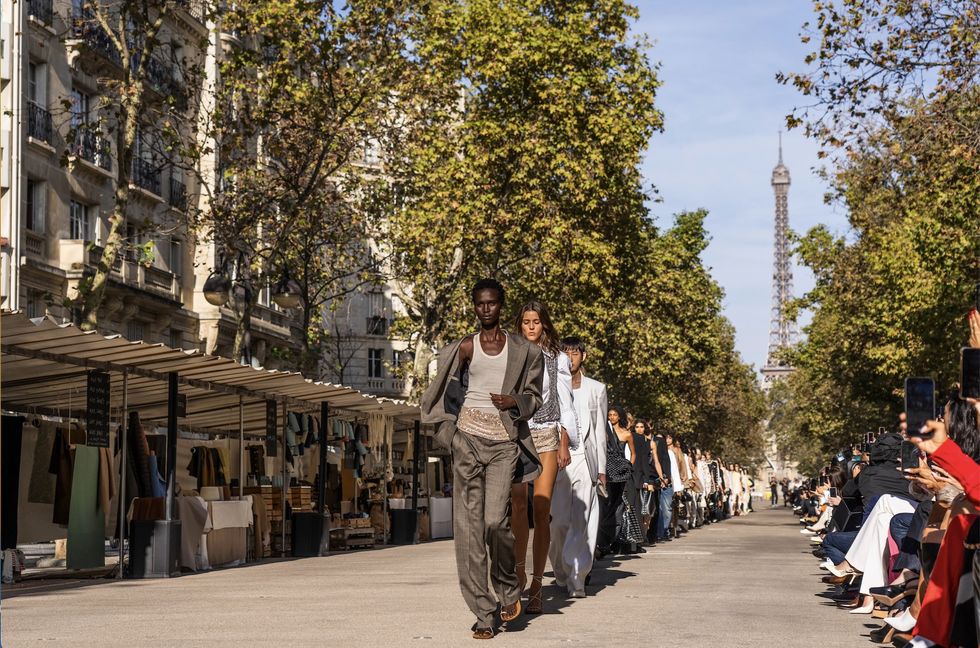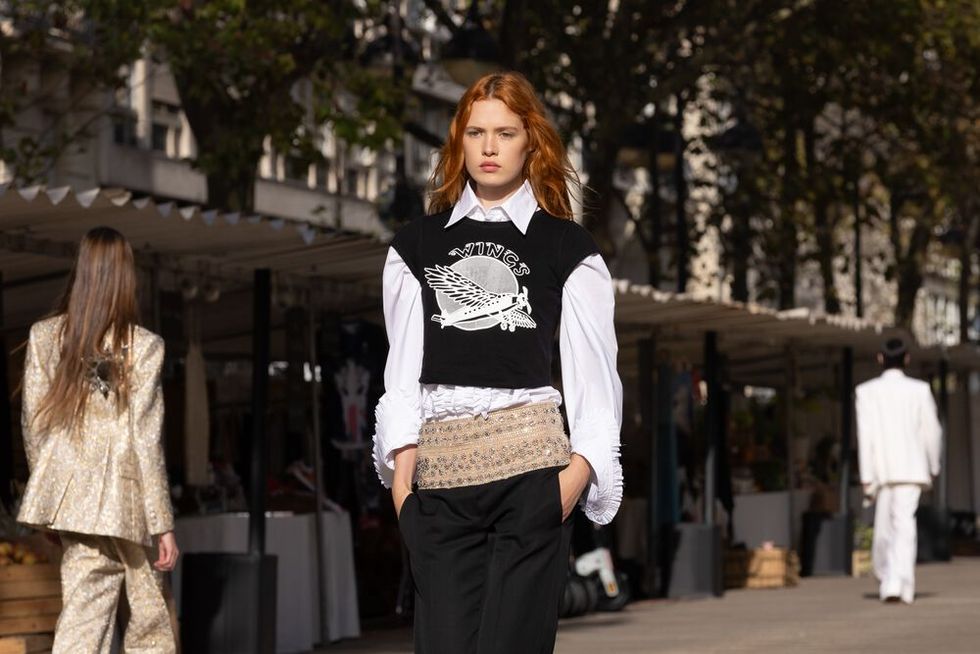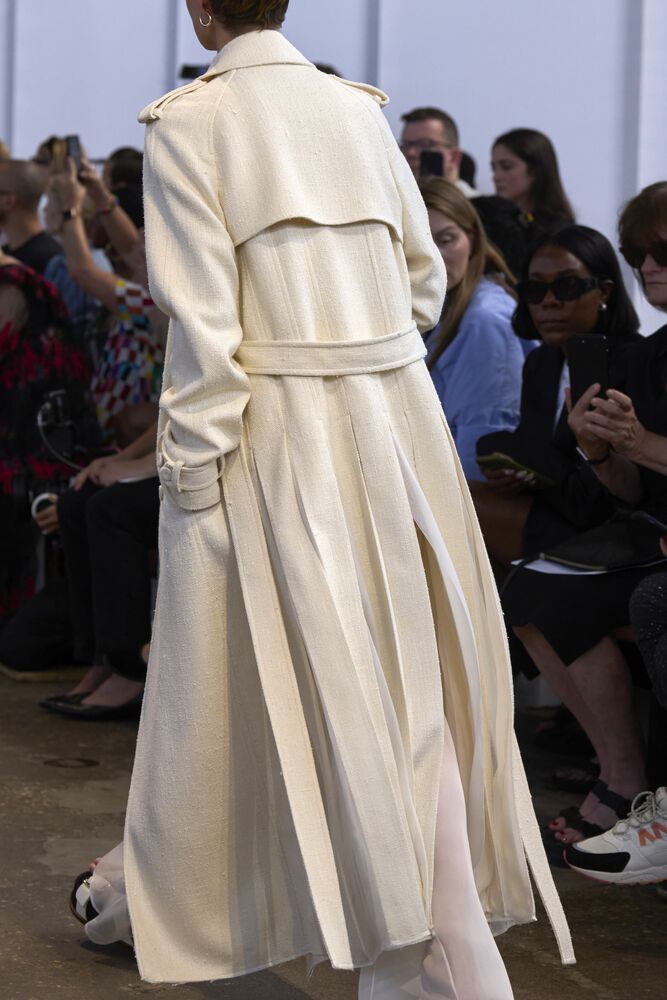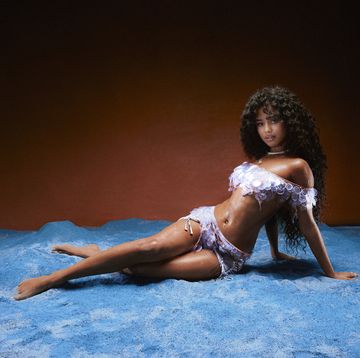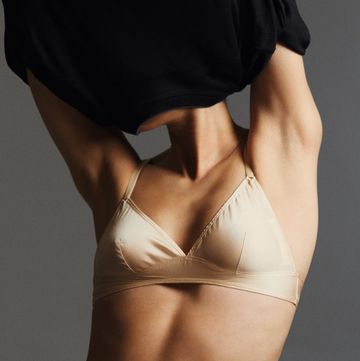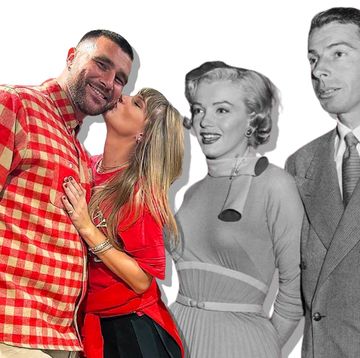When Covid-19 struck, and the world came to a standstill, the fashion business underwent a very public environmental and social re-evaluation - one that was, and still is, greatly needed. The fashion industry produces between 100 and 150 billion items a year - nobody really knows, because no one has to keep count - and only 80% are sold; the remaining 20 percent are destroyed or dumped in landfill before ever hitting the retail floor. Only 1% of fashion that is sold is recycled.
Hearing designers and executives call for change was heartening. I have reported on the fashion industry for 35 years, starting at The Washington Post in the late 1980s, and thought I knew the business—how our clothes were made, who made them, what the factories were like.
FIND OUT MORE ON ELLE COLLECTIVE
Then I started researching for my book, Fashionopolis: The Price of Fast Fashion and the Future of Clothes, and saw a completely different side of the industry: filthy sweatshops in Bangladesh and downtown Los Angeles; a 'dead' river in Vietnam, turned toxic from denim factory runoff. And the statistics gathered by NGOs and the United Nations on fashion’s environmental impact - now that was mind-boggling.
The business is believed to be responsible for 2 to 8% of global carbon emissions - again, a broad range, because no one has to report their carbon impact figures. Much of those emissions come from coal-powered factories. Two-thirds of our clothes are made with petroleum-based materials, such as polyester, nylon, neoprene, and elastine, which gives Lycra and Spandex their stretch.
These are plastics, essentially, which never biodegrade, and which emit microfibers when washed - an estimated 1 million per load of laundry. And there are so many other horrors, too: immense water usage, carcinogenic dyes, toxic chemicals to treat crops like cotton, animal abuse.
'Textiles have, on average, the fourth biggest impact on the environment and climate change from a consumption perspective,' said Lars Fogh Mortensen, circular economy and textiles expert at the European Environment Agency. 'Only food, housing, and mobility have higher impacts, and these have been regulated for years, if not decades.'
How could a business that is supposed to be about beauty be so ugly? The fact that fashion’s top players found this appalling, too, and were moved to do something about it, gave me hope.
Then everyone got back to work, and the loud talk of reforms quietened down. But that didn’t mean that change wasn’t afoot. As I shifted my focus on the fashion business from style to sustainability, I discovered all sorts of good works happening, albeit below the radar.
Several major brands have brought on climate activists as ambassadors and consultants, such as models Amber Valletta at Karl Lagerfeld, and Lily Cole, author of the climate book, Who Cares Wins, for such UK companies as Oyuna cashmere and Skydiamond. 'I’m amazed on what’s happened…[since] I started in this arena of really connecting fashion, environmental and social justice,' Valletta told me for my podcast, The Green Dream. Before, the subject of climate in fashion 'was so niche. It wasn't trending.'
It is now. Throughout the industry there has been notable effort to reduce carbon emissions, rethink supply chains, and focus on bolstering biodiversity. Kering, the French luxury group that includes Gucci, Saint Laurent, Balenciaga and Alexander McQueen, teamed up with Conservation International, an environmental NGO in Virginia, to create the Regenerative Fund for Nature, a five-million-euro fund that is working to transform one million hectares of crop and rangelands into regenerative agricultural spaces by 2026. Inditex, which owns Zara, joined the fund last year.
More companies are sourcing recycled materials - from polyester to cashmere - and cleaner natural fibers, such as organic cotton. And there is the bio-revolution: start-ups producing new materials made from mycelium, seaweed, wine industry waste, and more.
'So much of the fashion industry has no clue that this could be a reality,' BioFabricate founder and chief executive Suzanne Lee has told me. 'They’re reticent about investing in it, because fashion doesn’t typically invest in research and development; [it] expects someone else to pay. That’s why luxury is so critical—because they have the funds'.
As laudable as these initiatives are, they’re not enough to create lasting positive change, because, maddeningly, post-Covid, fashion companies amped up manufacturing and marketing to make up revenue losses incurred during the pandemic. That’s right: over-production and over-consumption are back in force. Wrap, or the Waste and Resources Action Programme, a climate NGO, reported last fall that gains in carbon and water usage reduction in the last few years have been negated by a 13% jump in apparel production and sales. If no drastic efforts are made to reduce fashion waste, the apparel industry’s global emissions will increase by 50% by 2030.
Thankfully, governments are stepping in. The European Union is rolling out 16 pieces of legislation that will crack down on fashion waste and greenwashing, and 'help make sustainable products the new norm.' In the United States, the Fashion Sustainability and Social Accountability Act, now pending in the New York assembly, will require companies selling in the state to report on their impacts and reduce carbon emissions.
It won’t be easy to get passed. Already, 'big fashion brands and trade associations have bemoaned the ‘impracticality’ of the Act’s mandated disclosure of their supply chains,' Kenneth Pucker, professor of Practice at Tufts University, stated in Business of Fashion. That’s because supply chains are so fractured - fabrics woven here, clothes sewed there, often in subcontracted factories far from brand headquarters - brands may not know where their products are made.
There are alternative fashion business models that are vastly more responsible. In 2022, Patagonia founder Yvon Chouinard and his family transferred the company to a trust and nonprofit organization that uses the profits - roughly $100 million a year—to fight climate change. American artist Dan Colen’s fashion company Sky High Farm Workwear, which has collaborated with Comme des Garçons and Converse, funnels profits into a food-security nonprofit linked to his 40-acre Hudson Valley farm. The company mantra is 'Good goods for good.'
Earlier this year, Natalie Chanin, founder of Alabama Chanin, a slow fashion brand in Florence, Alabama, that I spotlight in Fashionopolis, transformed the business into a nonprofit. 'All profits go back into the eco-system'—the company, plus her School of Making education program, symposiums, and grants for makers, she told me. 'We can do more good works. Treat our employees well—offer retirement plans, which is not normal in textiles manufacturing. Support artisans and local suppliers properly.'
And, despite the pushback from its competitors, Kering is proving that supply chain transparency is absolutely possible. In February, it was the only luxury group among the ten companies ranked Triple A by CDP, a not-for-profit that runs the global disclosure system. 'Transparency is absolutely fundamental for effective environmental action and it’s been a priority for us for many years,' said Kering’s Chief Sustainability Officer Marie-Claire Daveu.
When I worked on Fashionopolis, my agent regularly reminded me that it was 'the book of hope,' and I call The Green Dream 'the podcast of hope.' The message of both is this: Yes, things have been bad for a very long time, but don’t despair, solutions are out there!
Nevertheless, despair I do at times, especially when I hear eyebrow-raising stories about greenwashing. There are days I wonder: Will fashion business ever get on board, like the automobile and energy industries have, and fully embrace green policy?
I think it will, once government regulation is firmly in place, and strictly enforced. Compliance will not only be the law; it will be what consumers demand, and expect. Only then will fashion be truly beautiful.
ELLE Collective is a new community of fashion, beauty and culture lovers. For access to exclusive content, events, inspiring advice from our Editors and industry experts, as well the opportunity to meet designers, thought-leaders and stylists, become a member today HERE.

